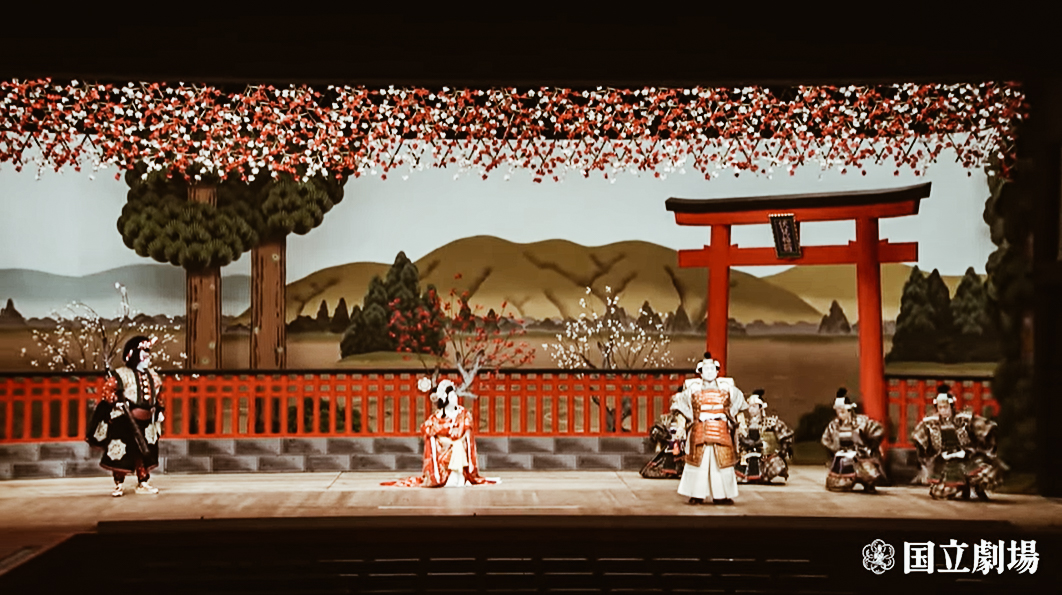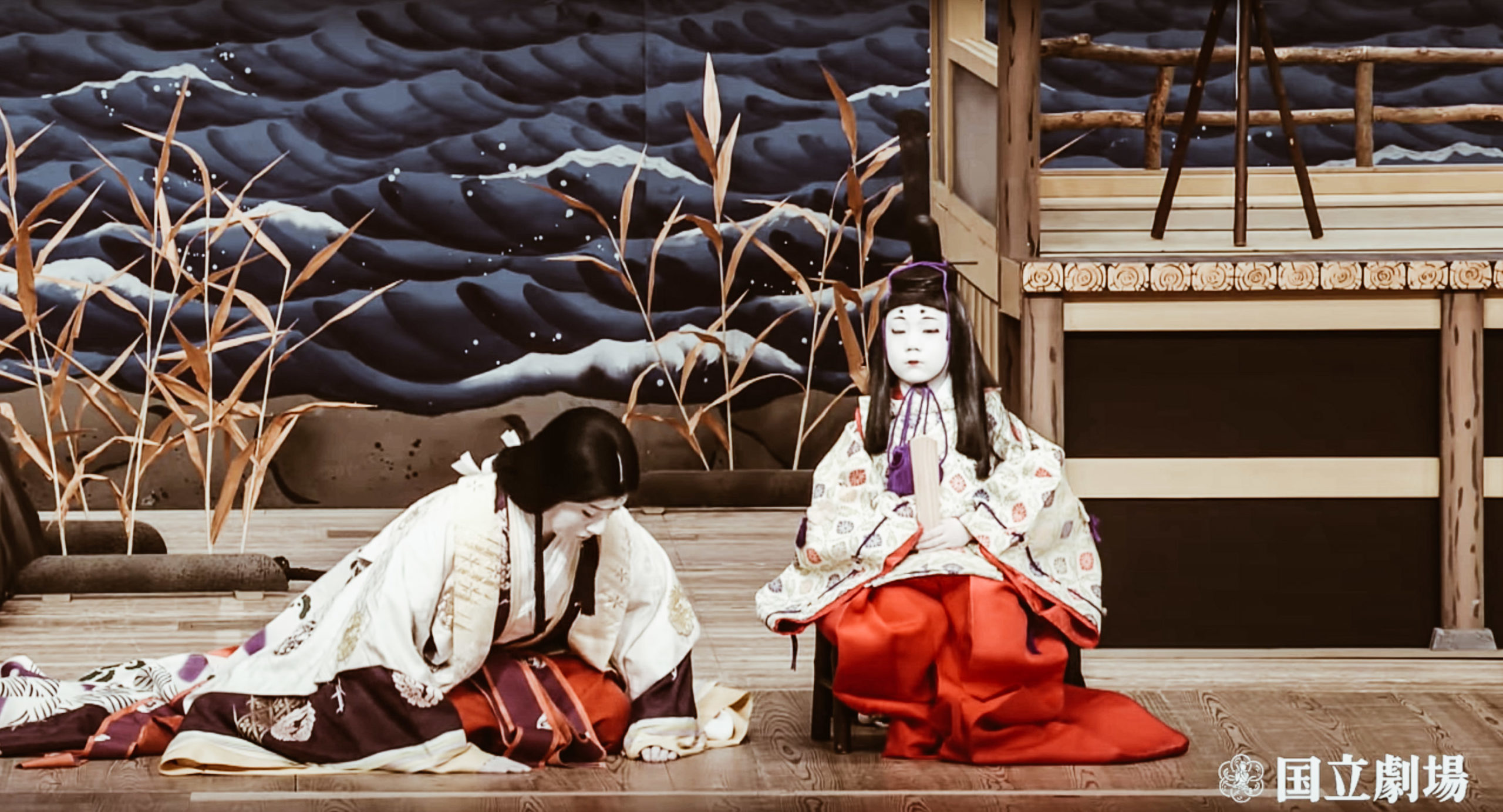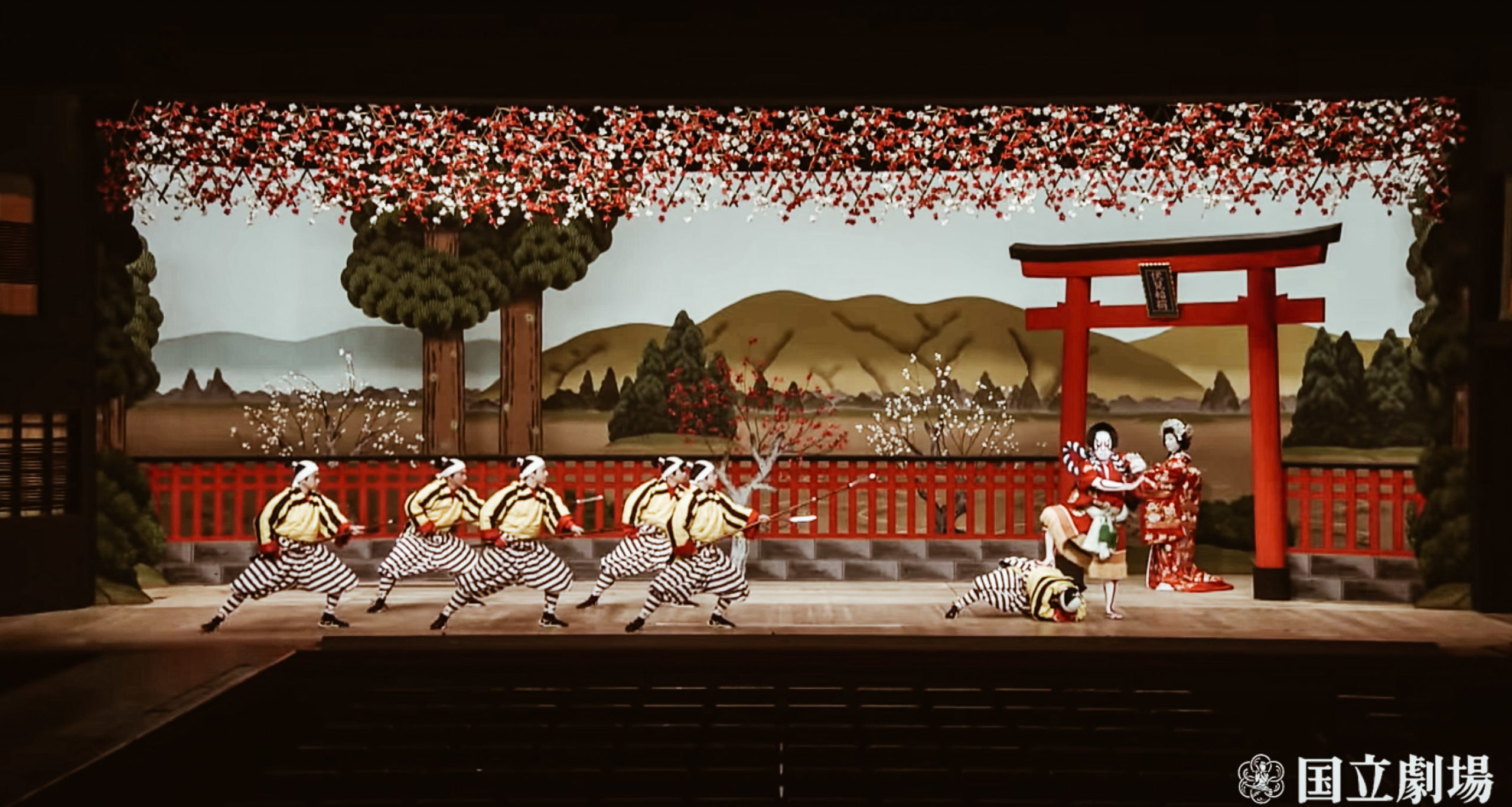Things to do during Quarantine: Watching the Kabuki Theater
Kabuki theater classics available for free online
written by: Erika | Source: SoraNews24
The coronavirus pandemic and lockdown continue all over the world, but today we share with you the classics of Kabuki theater available online to spend time in quarantine.

The Origins
For those who do not know what we are talking about, the term kabuki (歌舞伎) indicates a type of theatrical representation that arose in Japan at the beginning of the seventeenth century.
The origins of this theatrical form are traced back to 1603 and refer to dances performed, on the banks of the Kamo river in Kyōto. The word Kabuki is made up of three ideograms: 歌 ka (song), 舞 bu (dance), 伎 ki (ability). The ideograms chosen to form the name are the phonetic equivalent of the word kabuki, derived from the verb kabuku (“to be out of the ordinary”). This indicated the appearance and clothing in vogue at the time of Toyotomi Hideyoshi and characteristic of the so-called kabukimono.
Originally, the Kabuki theater was interpreted only by women, however, following the prohibition on grounds of morals, it was passed to a male only interpretation also for the female parts. The actors specialized in female roles are called onnagata. This theatrical tradition enchanted the emerging bourgeois class of the city and consequently became very popular. The novelty of these works consisted in the representation of facts, usually dramatic, that really happened. In fact, often very little time passed between the event and the performance, constituting a real means of mass communication.
The structure
The structure of Kabuki is very different from the scheme of western theater and the works never deal with general issues, existential questions or philosophical reflections. So there are no Shakespearean monologues or considerations of the protagonists on political issues. With a very fragile story and characters, the works are often written by several hands.
Also for this type of theatrical form, the principle of not assigning preponderance to verbal communication, in opposition to western culture, applies. In fact, for a long time, it was hard for us westerners to be able to read difficult and subtle situations. The events expressed through the emotions of the individual characters always prevail over moral considerations, creating a strong emotional tension.
5 hours of Kabuki theater online

In contrast to the Noh and Bunraku theater, the Kabuki theater has worldwide resonance especially for the traditional and exaggerated facial makeup together with the dramatic costumes. Most of these performances take place in important places, so to attend a Kabuki opera you have to be in the right place, at the right time and an economic possibility at your disposal. In fact, some performances such a niche that they can only run for one time. Furthermore, if we add the closure of the theaters we can understand how the problems arise for this type of art.
After the cancellation of Yoshitsune Senbon Zakura (Yoshitsune and the Thousand Cherry Trees), a performance scheduled for March 3, Japan’s National Theater took the opportunity to create something even more special. In fact, the performance with no audience will be published on the theater’s Youtube channel. Divided into three videos, the theatrical performance is available for viewing until April 30 at 15:00 JST.
Yoshitsune Senbon Zakura
Yoshitsune Senbon Zakura has five acts and would usually take two days to perform in its entirety. As such, these videos portray the story in separate stages. Performance A covers the parts “Torii Mae”, “Tokaiya” and “Daimotsu-Ura” of the work, the performance B includes the portions “Kokingo Uchijinishi”, “Shiinoki” and ” Sushiya “. Also, performance C manages the “Michiyuki Hatsune Tabi” and “Kawatsura Hogen Yakata” for a total of five hours of entertainment.

Although this is one of the most famous ancient epic operas, Kabuki theater can also be enjoyed with limited or absent Japanese language skills. Indeed, costumes, performances, and atmospheric music help to provide a broad context. In addition, Yoshitsune Senbon Zakura is one of the three most famous Kabuki shows, so the material for finding your way through the story is also available to foreigners.
To watch all the performances, check out Japan’s National Theater YouTube channel.
Share this:
- Click to share on Facebook (Opens in new window)
- Click to share on Twitter (Opens in new window)
- Click to share on Tumblr (Opens in new window)
- Click to share on Pinterest (Opens in new window)
- Click to share on Telegram (Opens in new window)
- Click to share on WhatsApp (Opens in new window)
- Click to share on Reddit (Opens in new window)
- Click to print (Opens in new window)






